By Christopher Miskimon
On April 12, 1942, thunder sounded across the waters surrounding the island of Corregidor. It was not a natural storm, however, but a conflagration of steel. That day artillery belonging to the United States military and the Empire of Japan began dueling for ultimate control of the island, which, if the Japanese succeeded, would signal the end of the Philippine campaign. In the beginning the American guns, some as large as 12 inches, caused great damage among their enemy’s emplacements. Corregidor was a tough target, heavily armed and fortified; some thought it impregnable.
The position’s apparent strength was largely a façade, however. American General Douglas MacArthur had failed to stock the island with sufficient provisions as prewar plans required. There were not enough trained troops to man all the defenses. Over the next two weeks the Japanese guns pounded Corregidor systematically, gradually wearing down the defenders and silencing their artillery. By the end of April, the American troops could barely return fire even though they still had plenty of ammunition. By early May most of the American guns lay silent, and the troops awaited the inevitable enemy landings. When they came, it was over within two days. The Japanese military had achieved another victory, though by year’s end its winning streak would be over.
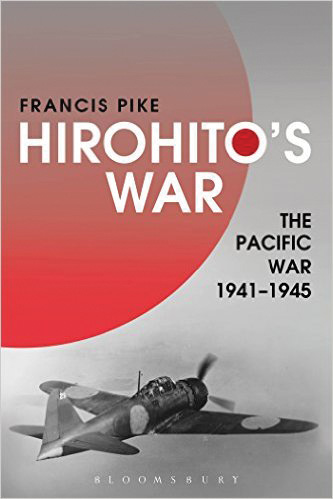 The meteoric rise and ensuing fall of the Japanese Empire is a complex and long story spanning almost two decades. Many Japanese referred to the period as the Fifteen Year War, placing the conflict’s start in China at the Mukden Incident of 1931. From there the Japanese nation was embroiled in a series of conflicts that continued until 1945, when it lay shattered and broken under Allied boots. Japan took a complex path to war, some of it deliberately planned and other aspects more reactionary to events. The full story of this momentous occurrence is covered in extraordinary detail in Francis Pike’s new book Hirohito’s War: The Pacific War 1941-45 (Bloomsbury Press, 2015, 1,152 pp., online link to maps and photographs along with other material, notes, bibliography, index, $45.00, hardcover).
The meteoric rise and ensuing fall of the Japanese Empire is a complex and long story spanning almost two decades. Many Japanese referred to the period as the Fifteen Year War, placing the conflict’s start in China at the Mukden Incident of 1931. From there the Japanese nation was embroiled in a series of conflicts that continued until 1945, when it lay shattered and broken under Allied boots. Japan took a complex path to war, some of it deliberately planned and other aspects more reactionary to events. The full story of this momentous occurrence is covered in extraordinary detail in Francis Pike’s new book Hirohito’s War: The Pacific War 1941-45 (Bloomsbury Press, 2015, 1,152 pp., online link to maps and photographs along with other material, notes, bibliography, index, $45.00, hardcover).
This book strives to convey the full breadth of Japan’s war experience. Japanese history up to the 1930s is recounted in a brief but nonetheless detailed fashion, giving background on Japanese attitudes and thoughts. There is also extensive space dedicated to explaining Japanese decisions in context to world events and the actions of Japan’s foes, particularly the United States. Their war decisions and preparations are neatly organized and mixed with what their eventual opponents were doing, giving insight into what the Japanese could see and interpret from their position. There are interesting sections on the extent of Emperor Hirohito’s war guilt and level of involvement in decision making. The author argues that while he was not in complete control, Hirohito was more than just a bystander and knew much about what his soldiers and sailors were doing in his name. When they were winning he joined in the revelry and only later appeared unenthusiastic when fortune turned against his country.
Moving into the war itself, the various campaigns and engagements are divided into chapters to enable the reader to digest each battle’s meaning and how its outcome affected the war as a whole. The influences of technology and new tactics are discussed as well. For example, the author goes into detail about how the development of fire control systems and antiaircraft weapons affected the outcome of the Great Marianas Turkey Shoot during the Battle of the Philippine Sea. While in some books this might seem a digression from the main story, here it is woven into the narrative effectively. The book continues through all the campaigns and regions of the Pacific War until reaching the penultimate finale in the skies over Hiroshima and Nagasaki along with the surrender itself.
This book, at 1,152 pages, can seem daunting to the reader at first, but upon opening the cover one can see it is organized with this length in mind. Each of the 37 chapters is easy to read on its own, and within them the text is cleverly divided into easily digestible blocks so a reader with only a few minutes can read through the next section while one with more time can read at length. This volume appears intended to be the definitive work on the Pacific War and succeeds in being just that. The book can easily serve as the single source on its subject in a library and still leave the user feeling informed in depth. The publisher, in an interesting twist, has put the entire book’s related map and photographs on a website the reader can view at will for easy reference.
 Hidden Warships: Finding World War II’s Abandoned, Sunk and Preserved Warships (Nicholas A. Veronico, Zenith Press, Minneapolis, MN, 2015, 256 pp., photographs, maps, appendices, bibliography, index, $30.00, hardcover).
Hidden Warships: Finding World War II’s Abandoned, Sunk and Preserved Warships (Nicholas A. Veronico, Zenith Press, Minneapolis, MN, 2015, 256 pp., photographs, maps, appendices, bibliography, index, $30.00, hardcover).
Thousands of ships went to the bottom of the oceans during World War II. More were scrapped in the years and decades afterward. A precious few were dedicated as floating museums and memorials to the sacrifice of their crews. Some were simply abandoned, left to rust away, often in forgotten corners of the world. Even as decaying hulks, however, these ships have stories to tell. Each year divers visit many of the sunken wrecks, such as the German pocket battleship Graf Spee near the harbor of Montevideo, Uruguay, or the veritable undersea fleet of sunken Japanese ships in Truk Lagoon. There, encrusted relics of mankind’s greatest conflict lay, recognizable to discerning, educated eyes. Museum ships can speak to those above water, reminding them of the achievements of generations past.
This latest work is a worthy follow-on to the author’s previous two volumes of the Hidden Warbirds series. He follows the exploits of divers exploring sunken warships, chronicles the tales of ships that today lie abandoned on reefs and beaches, and reveals where some ships ended their seagoing lives as museums. Each chapter gives the historical background of the subject vessels, and recent images provide the reader with a sense of the passage of time. The efforts of the various diving and research teams are also given attention. Some of the ships covered in the book are famous and others unknown, but all have a story to tell.
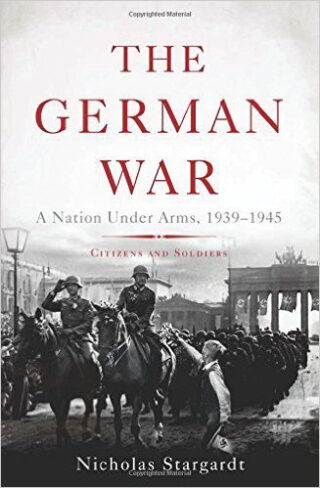 The German War: A Nation Under Arms, Citizens and Soldiers 1939-1945 (Nicholas Stargardt, Basic Books, New York, 2015, 720 pp., maps, illustrations, notes, bibliography, index, $35.00, hardcover)
The German War: A Nation Under Arms, Citizens and Soldiers 1939-1945 (Nicholas Stargardt, Basic Books, New York, 2015, 720 pp., maps, illustrations, notes, bibliography, index, $35.00, hardcover)
Outside the circle of diehard Nazis, the German populace actually did not welcome the invasion of Poland in 1939. Yet, despite this lack of enthusiasm for war, when it finally ended in 1945 it was with fanatical resistance at the very steps of the Reich Chancellery building in Berlin. There are two stereotyped views of how this occurred. The German populace was both complicit in and knowledgeable of what was happening, or it knew nothing and was led astray by the Nazi regime. Neither is entirely true, adding a level of complexity to the issue which forces a reader or student to consider conflicting evidence in order to understand the chaos and uncertainty of the time.
To convey a sense of what the German people’s varied perspectives were, the author delves into detailed accounts of common citizens, soldiers, judges, lawyers, housewives, and others. All these disparate viewpoints are woven together into a work that is indeed thought provoking. The crimes of Nazi Germany are so heinous it is often easier to generalize, but this new book tells the story of wartime Germany in a dispassionate, detailed, and comprehensive way.
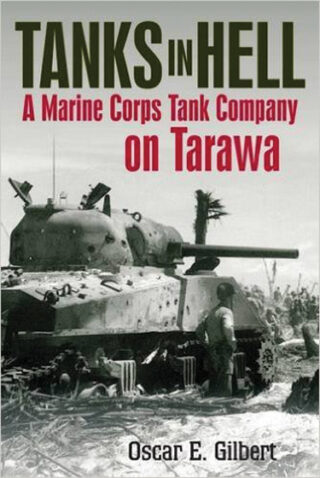 Tanks in Hell: A Marine Corps Tank Company on Tarawa (Ocsar E. Gilbert and Romain Cansiere, Casemate Publishing, Havertown, PA, 2015, 364 pp., maps, photographs, appendices, notes, bibliography, $34.95, hardcover).
Tanks in Hell: A Marine Corps Tank Company on Tarawa (Ocsar E. Gilbert and Romain Cansiere, Casemate Publishing, Havertown, PA, 2015, 364 pp., maps, photographs, appendices, notes, bibliography, $34.95, hardcover).
The Battle of Tarawa shocked America. It was a bloody, grinding fight that chewed up men on both sides and caused horrific casualties. The Marines who landed on this tiny island fought a Japanese force whose commander bragged Tarawa could not be taken in 100 years by a million men. The Marines took it in just over three days but paid a fearful price.
Instrumental in the battle for the island fortress were the men and tanks of C Company, 1st Corps Medium Tank Battalion. The unit was formed on January 18, 1943, at Camp Pendleton, California. It entered combat 10 months later at Tarawa. During the deadly fighting the tanks of C Company went ashore to help expand the beachhead. The Japanese used every weapon at their disposal to destroy them; only two tanks survived. Despite their heavy losses the tank crews helped the hard-pressed infantry to move forward, allowing more Marines to land and move inland. Without them, victory would have been even harder to win.
This is the story of a single tank company in a single battle. As such, it brings a high degree of detail to the storytelling, allowing the reader to explore what the fighting was like at a personal level. The author gives enough detail about the organization and planning for the battle to enhance the understanding of why the Marine tankers had to do what they did. There are already a large number of books on Tarawa; however, this book stands out through its thorough study of a small but essential part of it.
 American Knights: The Untold Story of the Men of the Legendary 601st Tank Destroyer Battalion (Victor Failmezger, Osprey Publishing, Oxford, UK, 2015, 352 pp., maps, photographs, appendices, notes, bibliography, index, $32.95, hardcover).
American Knights: The Untold Story of the Men of the Legendary 601st Tank Destroyer Battalion (Victor Failmezger, Osprey Publishing, Oxford, UK, 2015, 352 pp., maps, photographs, appendices, notes, bibliography, index, $32.95, hardcover).
The Battle of El Guettar began in the early morning hours of March 23, 1943, with the men of the 601st Tank Destroyer Battalion arrayed in front of the American artillery positions east of the town. The Americans were preparing to advance when a German attack materialized from the east. The Americans had half-tracks with 75mm guns against a mix of panzers and other armored vehicles. Soon the two forces were engaged in a bitter duel; smoke swirled around the battlefield as cannons roared and men were maimed and killed. When the action finally ended the Germans were withdrawing; they had been fought to a standstill despite their numbers and experience. The Americans had shown what they could do, in particular this battalion of tank killers. It was credited with 30 panzers.
The 601st served in combat from North Africa onward, ending the war in Germany. Only a handful of tank destroyer battalions can claim such an achievement. The author, whose uncle was a member of the unit, discovered his relative’s letters and was inspired to learn more about the formation. His research is extensive, and the writing is engaging. The story of the 601st is a tale of American armored combat experience during World War II in fascinating detail.
 India at War: The Subcontinent and the Second World War (Yasmin Khan, Oxford University Press, Oxford, UK, 2015, 432 pp., illustrations, glossary, notes, bibliography, index, $29.95, hardcover).
India at War: The Subcontinent and the Second World War (Yasmin Khan, Oxford University Press, Oxford, UK, 2015, 432 pp., illustrations, glossary, notes, bibliography, index, $29.95, hardcover).
Of all the nations in Britain’s Commonwealth, none contributed more soldiers to World War II than India. The subcontinent contributed 2.5 million men, all of them volunteers; they served across the globe but particularly in North Africa, Italy, and Southeast Asia. While those troops were helping win the war, however, the Indian home front was in turmoil. Social and cultural changes were occurring. Indians were heavily engaged in war production and building the infrastructure the military needed to train and fight. Meanwhile, Indian territory was under occasional attack by the Japanese.
There has been relatively little published in the United States about India during the war, and this book goes far toward redressing that imbalance. The author concentrates on how average Indians dealt with the circumstances that were forced upon them. She also explains how the mobilization for war affected what was already happening in India, such as the growing independence movement in the context of greater world events like the impending twilight of the British Empire. This book fills a gap on the study of World War II and one of its lesser known theaters.
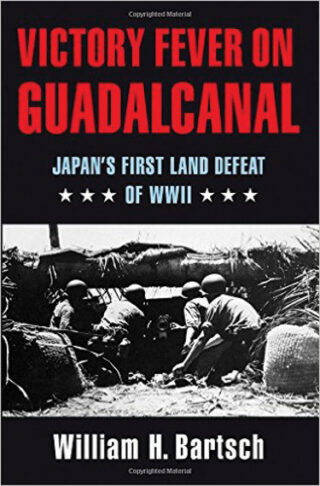 Victory Fever on Guadalcanal: Japan’s First Land Defeat of WWII (William H. Bartsch, Texas A&M University Press, College Station, 2014, 339 pp., maps, photographs, appendices, bibliography, index, $35.00, hardcover).
Victory Fever on Guadalcanal: Japan’s First Land Defeat of WWII (William H. Bartsch, Texas A&M University Press, College Station, 2014, 339 pp., maps, photographs, appendices, bibliography, index, $35.00, hardcover).
Many battles are referred to as turning points in World War II; Guadalcanal is deserving of the moniker. After this campaign the Japanese were on the defensive until war’s end. When America realized Japan was building an airfield on the island, it responded, capturing it in a day. That was the simple beginning to what became a miserable, brutal, slogging fight as the Japanese made repeated attempts to dislodge the entrenched U.S. Marines. For the next six months the Japanese wave crashed against the American rock to no avail. In the end, the Japanese forces had to withdraw, wholly defeated for the first time.
The story of this epic struggle is told at the foxhole level with individual accounts throughout. Small details are strewn across the pages, providing dramatic vignettes that often grip the reader at an emotional level. The care that went into the research for this work is clear, making it entertaining and engaging.
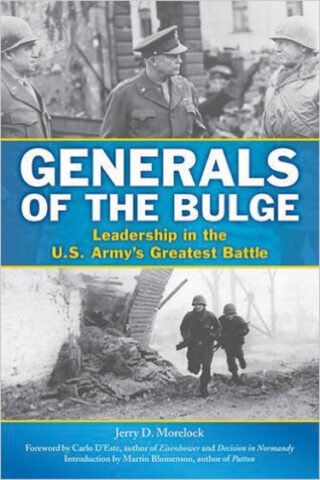 Generals of the Bulge: Leadership in the U.S. Army’s Greatest Battle (Jerry D. Morelock, Stackpole Books, Mechanicsburg, PA, 2015, 365 pp., maps, photographs, appendices, notes, bibliography, index, $34.95, hardcover).
Generals of the Bulge: Leadership in the U.S. Army’s Greatest Battle (Jerry D. Morelock, Stackpole Books, Mechanicsburg, PA, 2015, 365 pp., maps, photographs, appendices, notes, bibliography, index, $34.95, hardcover).
The Battle of the Bulge encompassed six weeks of horrible fighting. Germany’s last great offensive in the West challenged the U.S. Army to the extreme. At the front lines, infantrymen fought and died trying to stem the Nazi tide. Behind them, however, were officers charged with deciphering German moves and developing responses. Eventually they would have to resume the offensive and push the enemy back. Their decisions ruled the lives of those at the front and ultimately determined the outcome in the Ardennes.
The author took a close, critical look at the generals who oversaw the campaign. Each chapter covers a different level of command, beginning with General Dwight Eisenhower at Supreme Headquarters. From there, General Omar Bradley, the 12th Army Group commander, is evaluated followed by General William Simpson of the Ninth Army. The VIII Corps commander, General Troy Middleton, is next, and a final chapter evaluates the generals who led the defense of St. Vith, Alan Jones and Bruce C. Clarke. Each is rated as to his effectiveness or lack thereof. It is an interesting study in leadership.
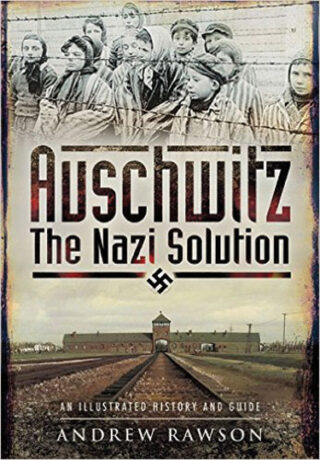 Auschwitz, The Nazi Solution: An Illustrated History and Guide (Andrew Rawson, Pen and Sword Publishing, 2015, 136 pp., illustrations, index, $16.99, softcover).
Auschwitz, The Nazi Solution: An Illustrated History and Guide (Andrew Rawson, Pen and Sword Publishing, 2015, 136 pp., illustrations, index, $16.99, softcover).
There were many concentration camps across Germany and Eastern Europe during World War II, but the complex of Auschwitz-Birkenau is among the most notorious. The camp progressed from a Polish prison encampment into a death camp where prisoners faced summary execution or a brutal existence as slave laborers until torment or starvation claimed them. A few resisted or tried to escape, but the camp was overall a place of horror and evil.
This book is part of a series that provides guidance on how to visit the famous—and infamous—locations of World War II. This volume gives the reader the background on the camp and the experiences of those trapped there. The history of Auschwitz is followed by directions to the City of Krakow, a good starting point for a reader to begin touring the area and viewing what is left of one of history’s most horrific places—in the hopes it will be remembered as a warning for the future.
 Born of the Desert: With the SAS in North Africa (Malcolm James, Frontline Books, Yorkshire, UK, 2015, 224 pp., maps, illustrations, appendix, $29.95, softcover)
Born of the Desert: With the SAS in North Africa (Malcolm James, Frontline Books, Yorkshire, UK, 2015, 224 pp., maps, illustrations, appendix, $29.95, softcover)
This is a classic tale of the early missions of Great Britain’s world famous Special Forces unit. Formed in 1941 to conduct reconnaissance and raids behind enemy lines, the Special Air Service (SAS) ranged across the desert, hitting the Germans and Italians where they were most vulnerable. They sowed fear wherever they went and forced the enemy to divert scant resources to protect against them.
The author was a medical officer in the SAS, and this account was originally published in 1945. Here it is reprinted in the original font with a section of new notes updating the reader. It is an interesting first-person account, written when the events were still fresh in the author’s mind. The book contains a level of detail only a participant can reliably bring to the events covered within.
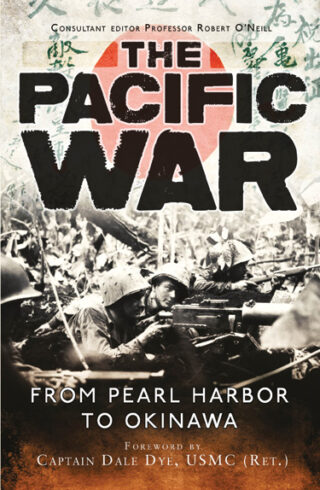 The Pacific War: From Pearl Harbor to Okinawa (Edited by Robert O’Neill, Osprey Publishing, Oxford, UK, 2015, 264 pp., maps, photographs, index, $9.95, softcover).
The Pacific War: From Pearl Harbor to Okinawa (Edited by Robert O’Neill, Osprey Publishing, Oxford, UK, 2015, 264 pp., maps, photographs, index, $9.95, softcover).
The Pacific War was fought over a vast area, requiring massive efforts in transportation and logistics to make even the smallest effort at engaging the enemy possible. America, drawn into the war through a surprise attack, endured through the dark days of 1942-1943 and rebounded with a military force that proved able to take the battle to Japan on a massive, war-winning scale.
Ten of the major campaigns of the Pacific are covered here, from Pearl Harbor to Okinawa. Each has its own chapter written by a different author. Each writer is an authority on their subject, able to tell the story of their given battle in great detail and accuracy. The book is concise, providing an excellent overview. Land and sea battles are both represented, giving the reader an overall perspective of how armies and navies fought across the great distances of the region.
New and Noteworthy
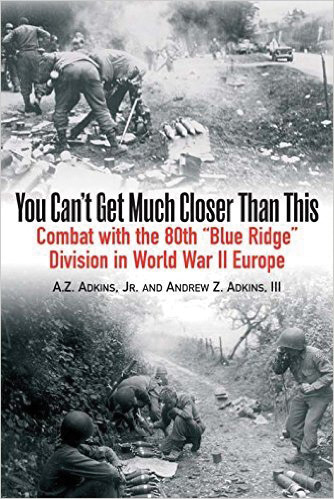 You Can’t Get Much Closer Than This: Combat with the 80th “Blue Ridge” Division in World War II Europe (A.Z. Adkins Jr. and Andrew Z. Adkins III, Casemate Publishing, 2015, $18.95, softcover). A veteran’s memoir of his time in combat. His account ranges from entering the service in August 1944 to the end of the war in Nuremburg.
You Can’t Get Much Closer Than This: Combat with the 80th “Blue Ridge” Division in World War II Europe (A.Z. Adkins Jr. and Andrew Z. Adkins III, Casemate Publishing, 2015, $18.95, softcover). A veteran’s memoir of his time in combat. His account ranges from entering the service in August 1944 to the end of the war in Nuremburg.
Writing the War: Chronicles of a World War II Correspondent (Edited by Anne Kiley and Thomas Pellechia, Prometheus Books, 2015, $25.00, hardcover). This is a collection of the letters and recollections of a Stars and Stripes correspondent and his love, who labored on the home front.
The Caucasus 1942-43: Kleist’s Race for Oil (Robert Forczyk, Osprey Publishing, 2015, $21.95, softcover). A detailed account of the German offensive to seize the Soviet oilfields in the Caucasus. It is well illustrated with both photographs and original art.
The Battle of Arnhem (Cornelis Bauer, Fonthill Media, 2015, $25.95, softcover). An in-depth story of the battle using many firsthand accounts and interviews. The author tries to dispel some of the myths surrounding the campaign.
The Conquering Tide: War in the Pacific Islands 1942-1944 (Ian W. Toll, W.W. Norton and Company, 2015, $35.00, hardcover). This is the second volume of a trilogy by this author. It covers the American island-hopping campaign from the foxhole to the admiral’s cabin.
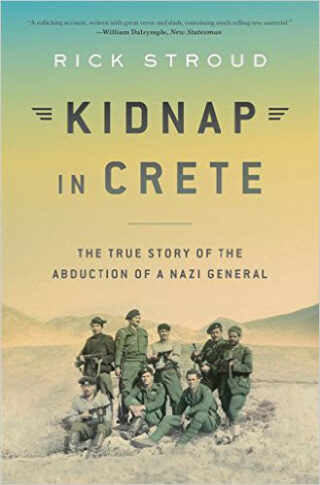 World War II at Sea: A Naval View of the Global Conflict 1939 to 1945 (Jeremy Harwood, Zenith Press, 2015, $30.00, hardcover) A wide-ranging summary of the major campaigns and actions across the oceans. It is well-stocked with photographs, charts, and maps.
World War II at Sea: A Naval View of the Global Conflict 1939 to 1945 (Jeremy Harwood, Zenith Press, 2015, $30.00, hardcover) A wide-ranging summary of the major campaigns and actions across the oceans. It is well-stocked with photographs, charts, and maps.
Kidnap in Crete: The True Story of the Abduction of a Nazi General (Rick Stroud, Bloomsbury Press, 2015, $28.00, hardcover) In April 1944, a small force of Special Operations Executive (SOE) operatives and partisans carried out a kidnapping of a Nazi general on the island of Crete. The tale is told in full here for the first time.
Check Six! A Thunderbolt Pilot’s War Across the Pacific (Jim Curran and Terence Popravak Jr, Casemate Publishing, 2015, $32.95, hardcover). A memoir by a Republic P-47 Thunderbolt fighter pilot who served in the Pacific Theater. He entered the war in New Guinea in 1943.
The Last Cavalryman: The Life of General Lucian K. Truscott (Harvey Ferguson, University of Oklahoma Press, 2015, $29.95, hardcover) A biography of the famous general. Bill Mauldin stated Truscott “could have eaten a ham like Patton for breakfast.”
Casualties of History: Wounded Japanese Servicemen and the Second World War (Lee K. Pennington, Cornell University Press, 2015, $39.95, hardcover). A study of how Japanese soldiers were treated once they returned home after World War II. The author uses memoirs to help explain what the injured soldiers who survived the war experienced.
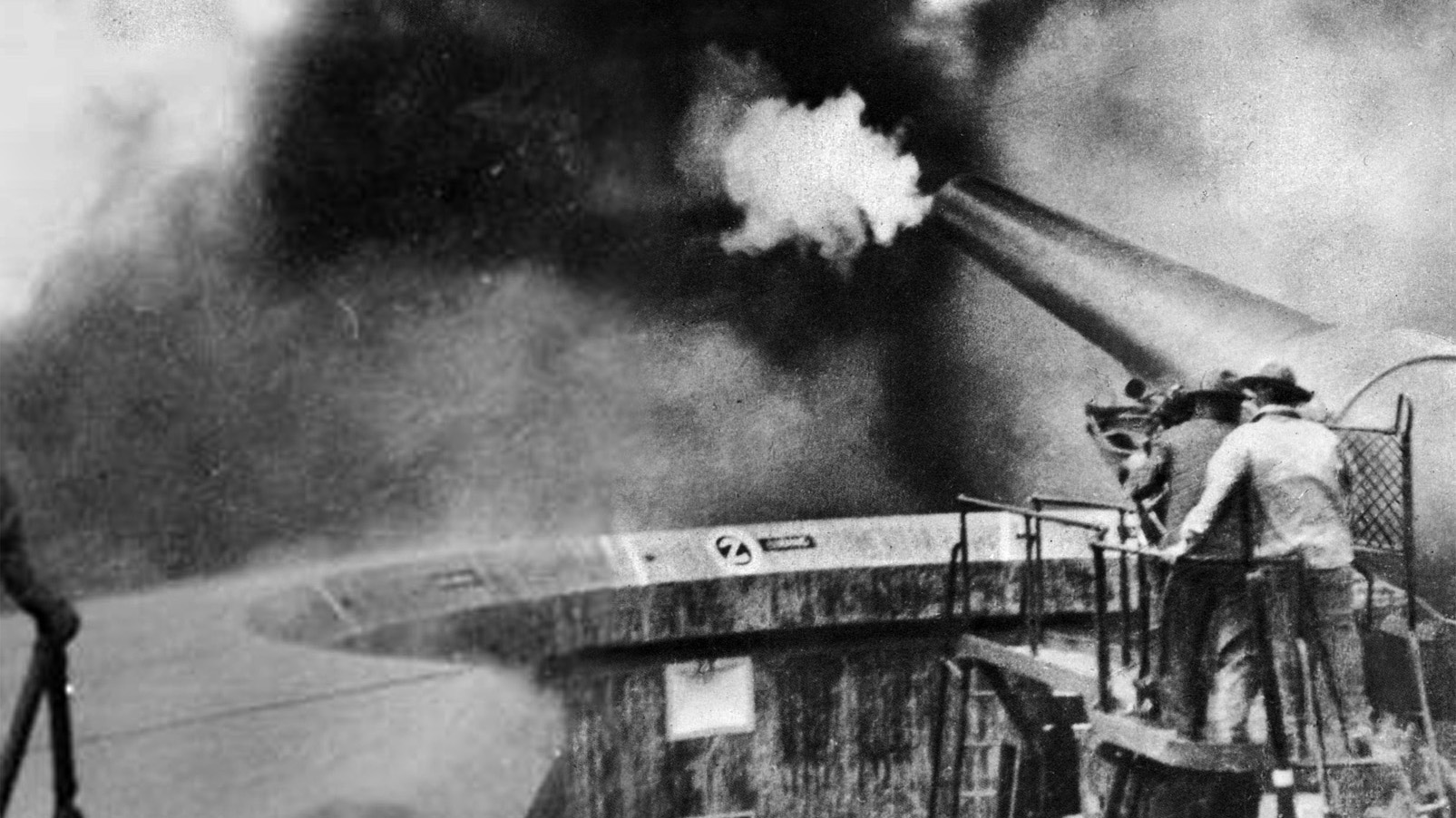
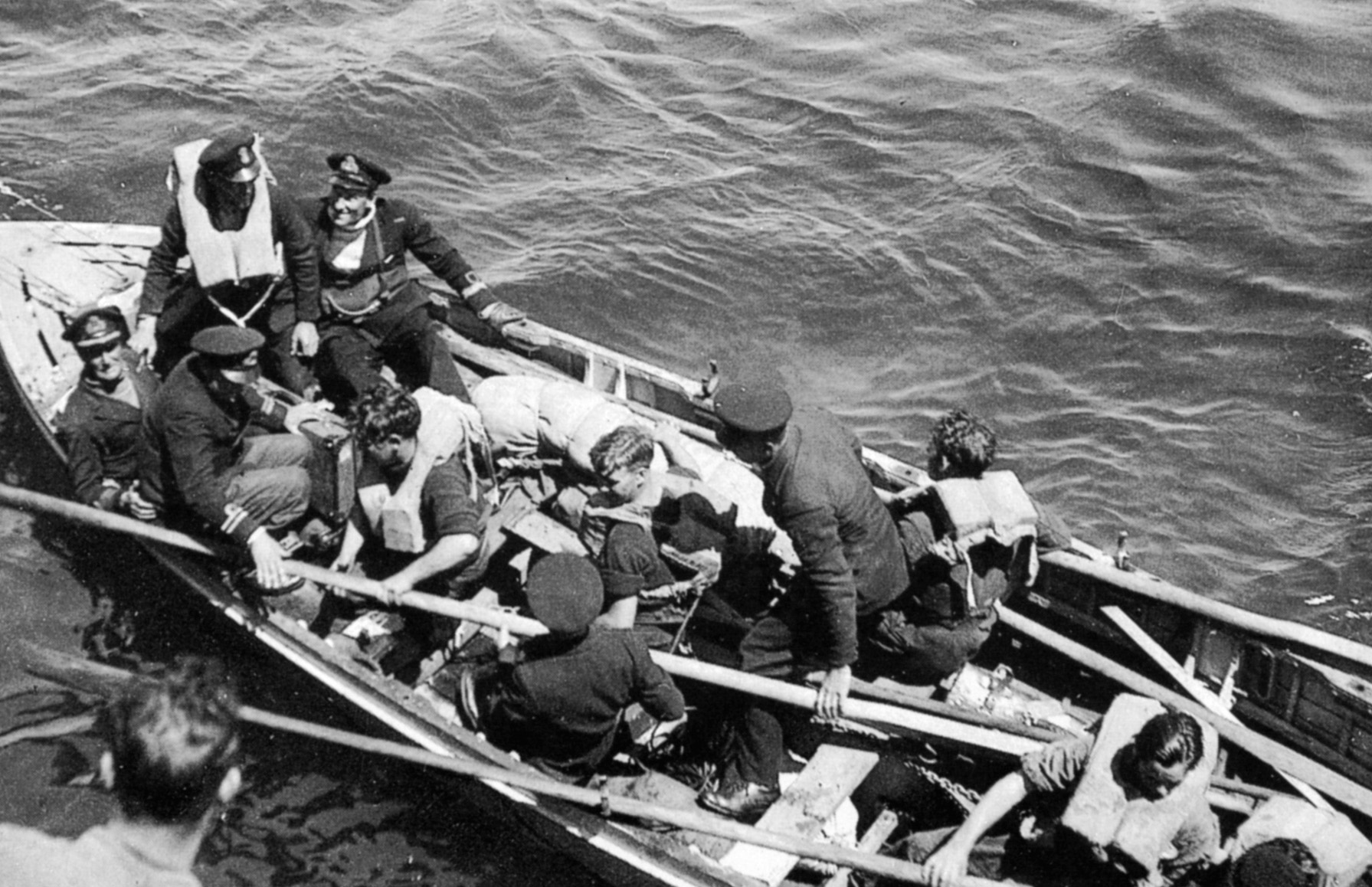
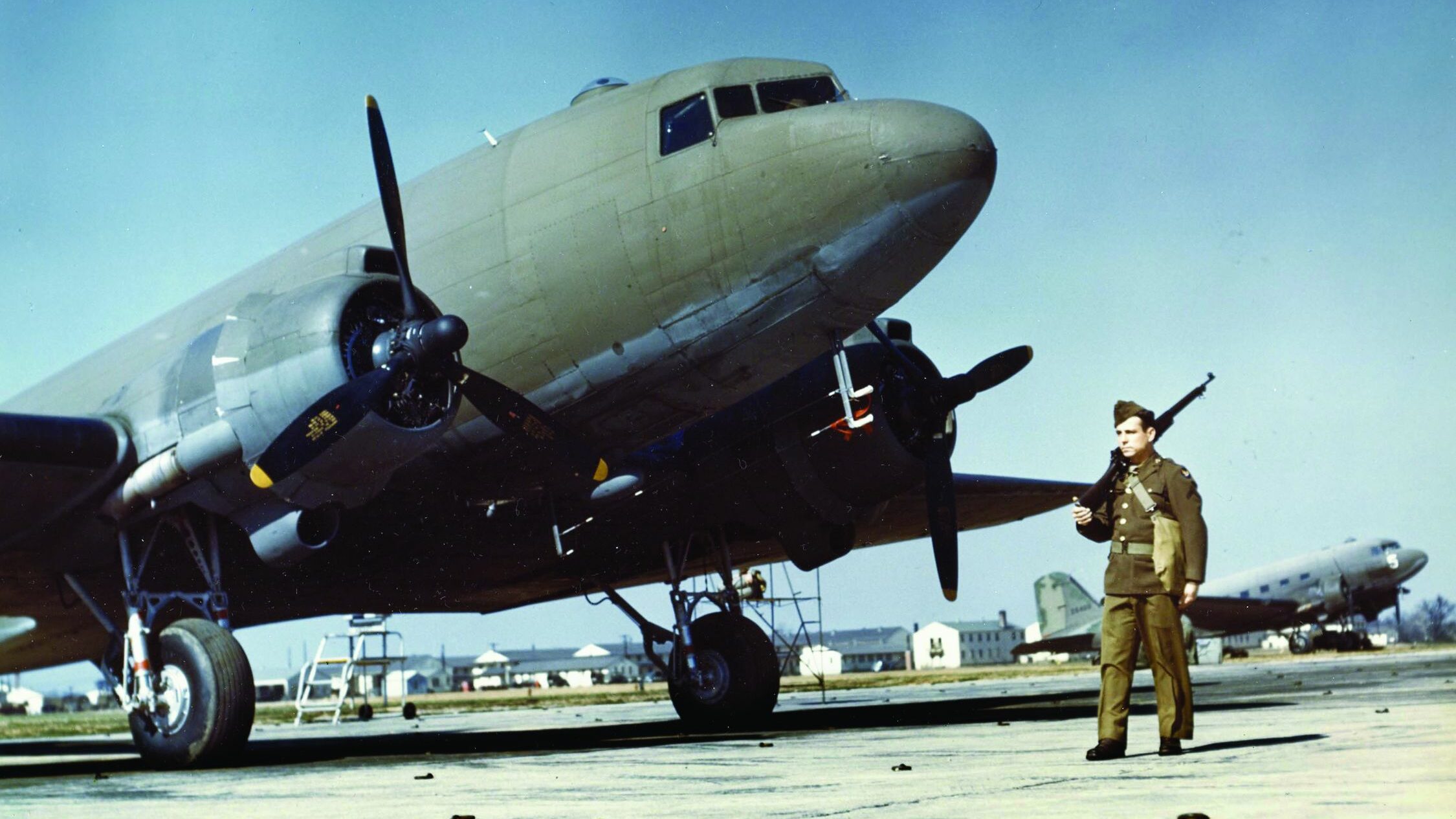
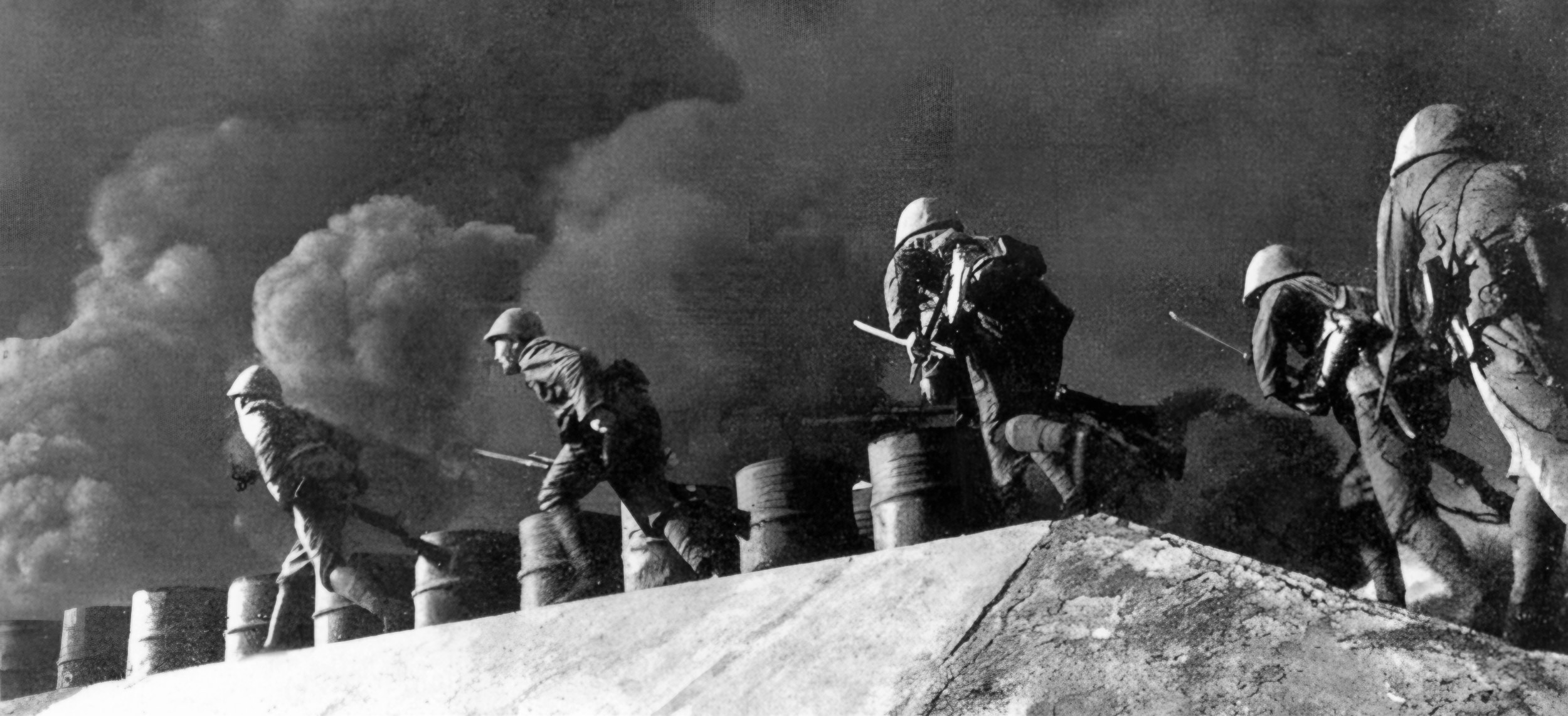
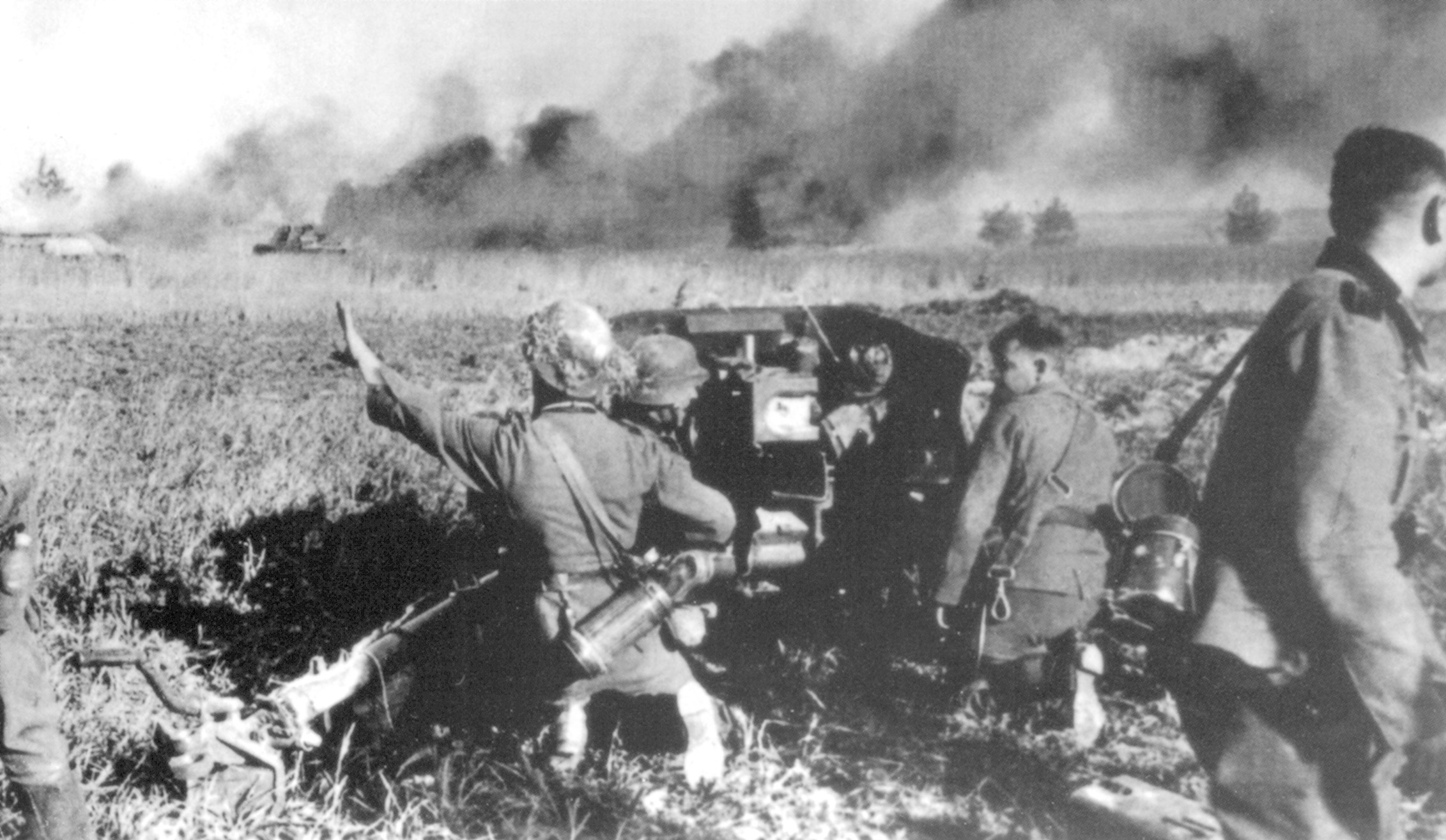
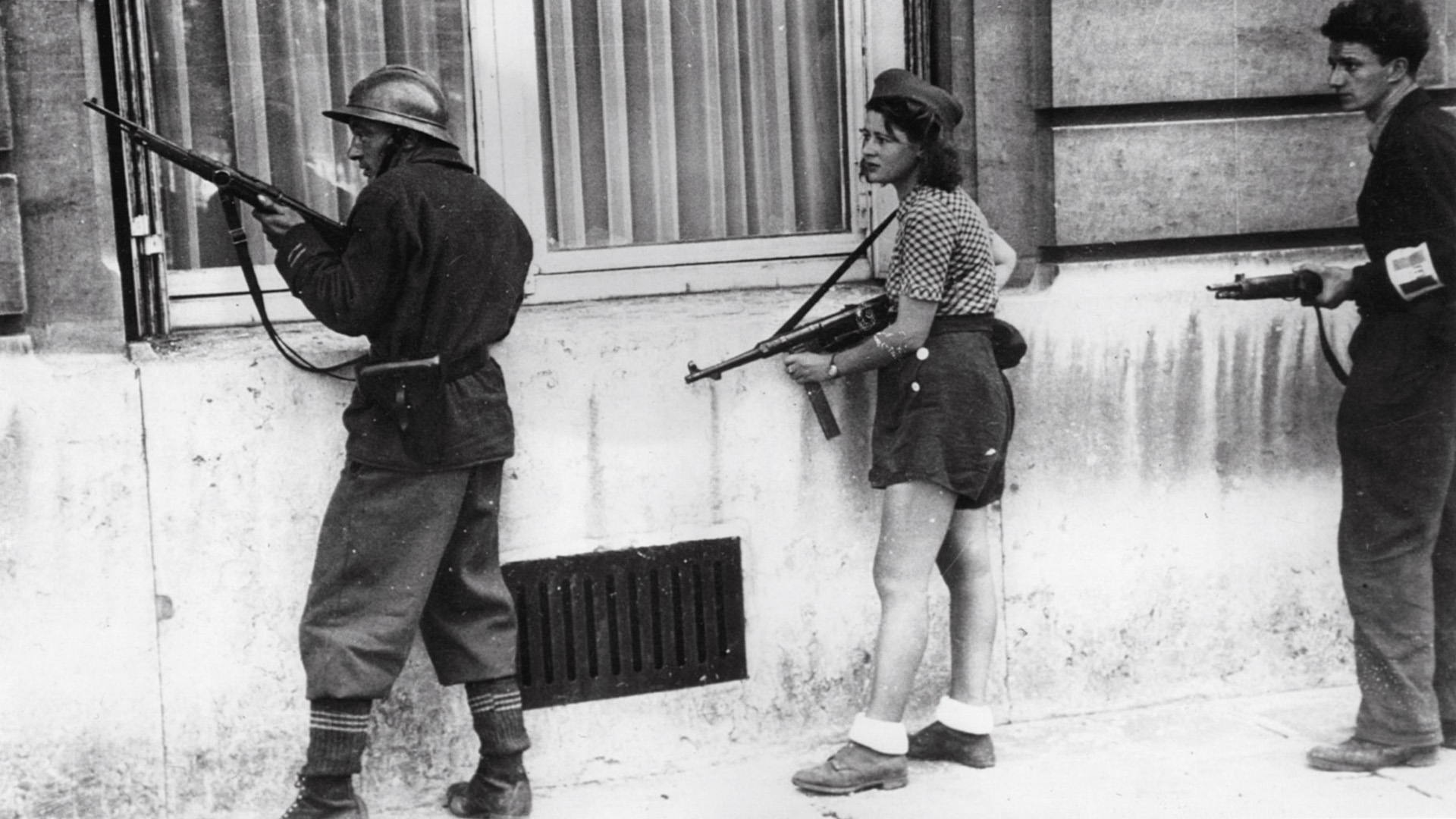
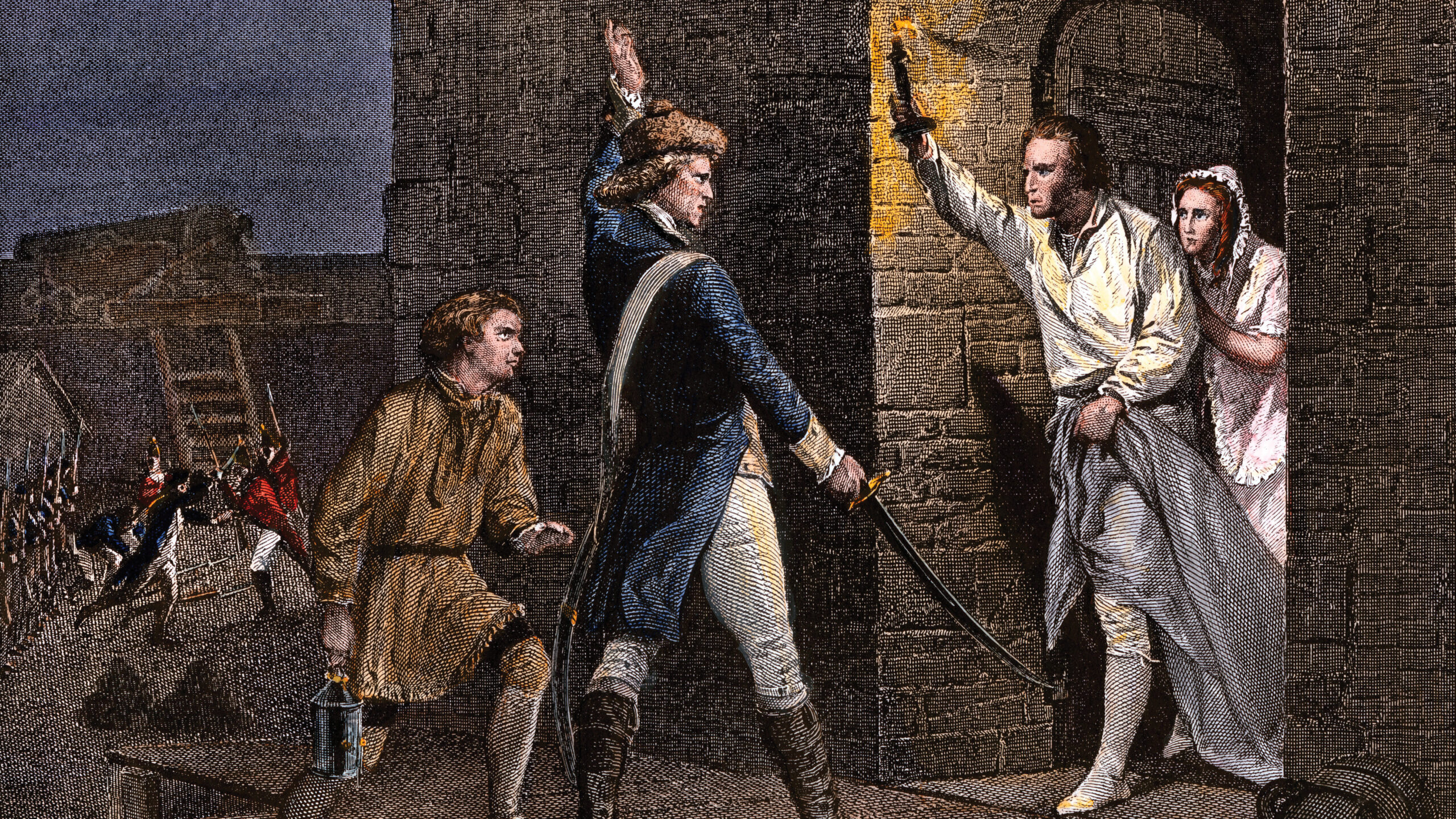
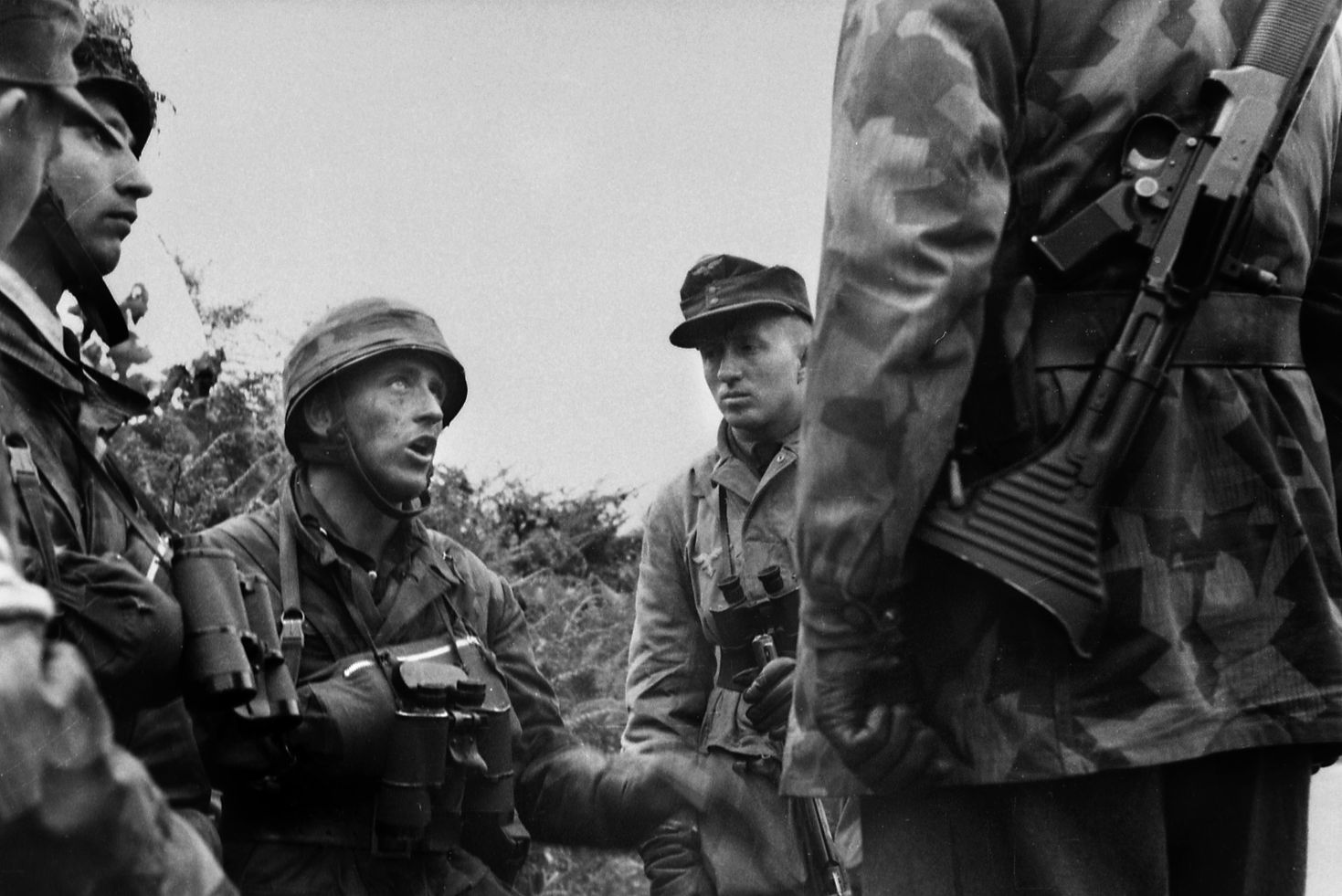
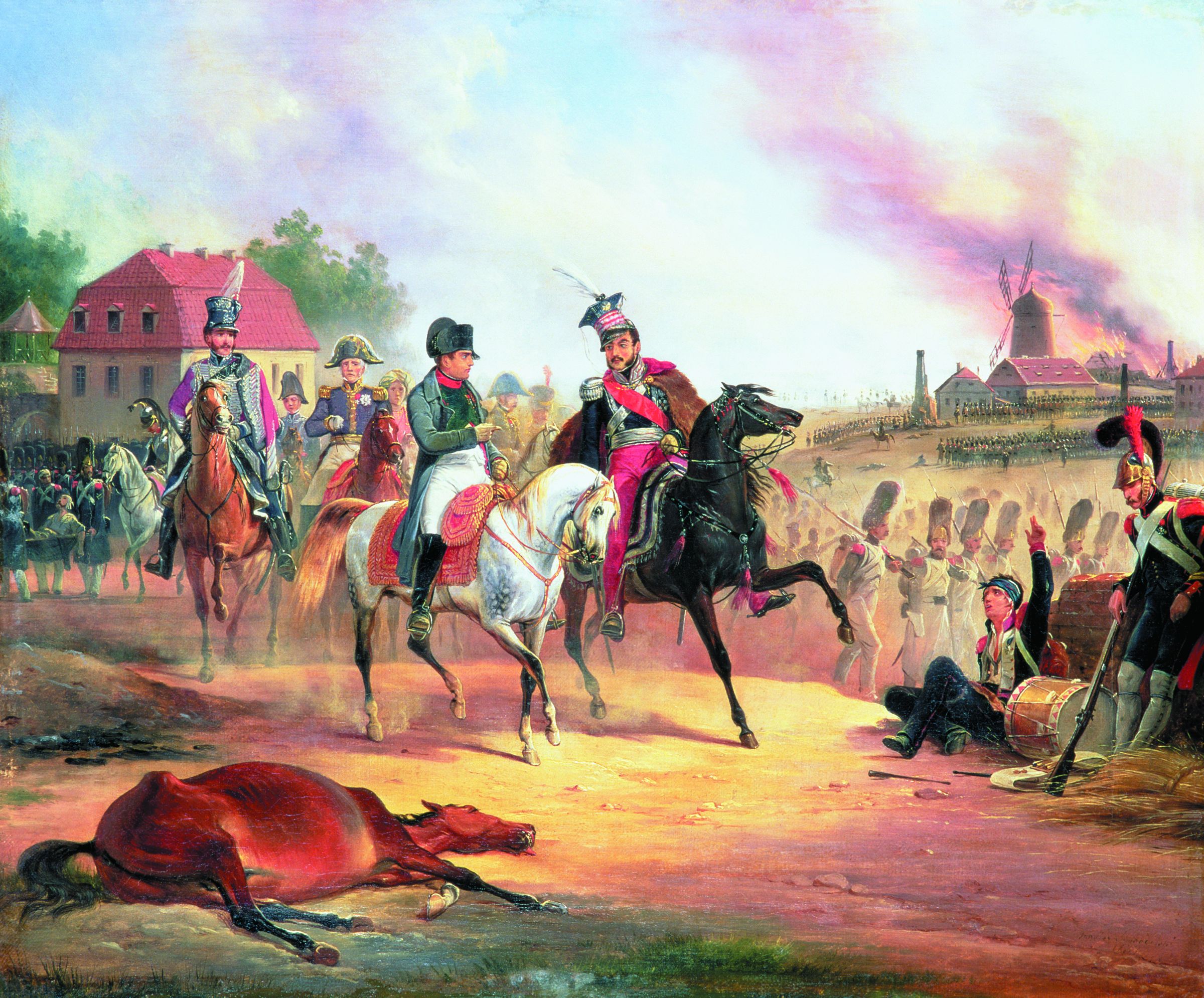
Join The Conversation
Comments
View All Comments